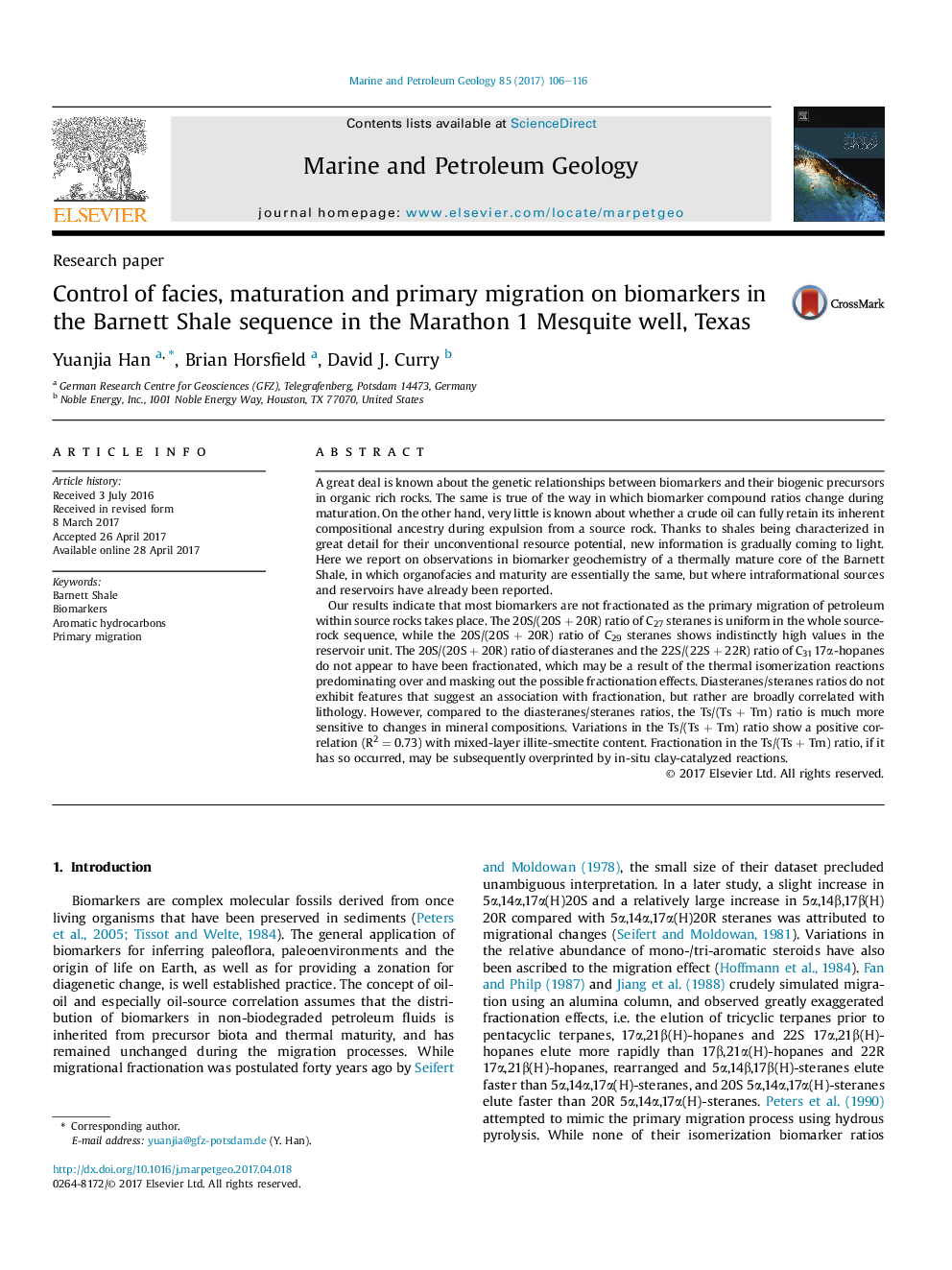| Article ID | Journal | Published Year | Pages | File Type |
|---|---|---|---|---|
| 5782077 | Marine and Petroleum Geology | 2017 | 11 Pages |
Abstract
Our results indicate that most biomarkers are not fractionated as the primary migration of petroleum within source rocks takes place. The 20S/(20S + 20R) ratio of C27 steranes is uniform in the whole source-rock sequence, while the 20S/(20S + 20R) ratio of C29 steranes shows indistinctly high values in the reservoir unit. The 20S/(20S + 20R) ratio of diasteranes and the 22S/(22S + 22R) ratio of C31 17α-hopanes do not appear to have been fractionated, which may be a result of the thermal isomerization reactions predominating over and masking out the possible fractionation effects. Diasteranes/steranes ratios do not exhibit features that suggest an association with fractionation, but rather are broadly correlated with lithology. However, compared to the diasteranes/steranes ratios, the Ts/(Ts + Tm) ratio is much more sensitive to changes in mineral compositions. Variations in the Ts/(Ts + Tm) ratio show a positive correlation (R2 = 0.73) with mixed-layer illite-smectite content. Fractionation in the Ts/(Ts + Tm) ratio, if it has so occurred, may be subsequently overprinted by in-situ clay-catalyzed reactions.
Related Topics
Physical Sciences and Engineering
Earth and Planetary Sciences
Economic Geology
Authors
Yuanjia Han, Brian Horsfield, David J. Curry,
